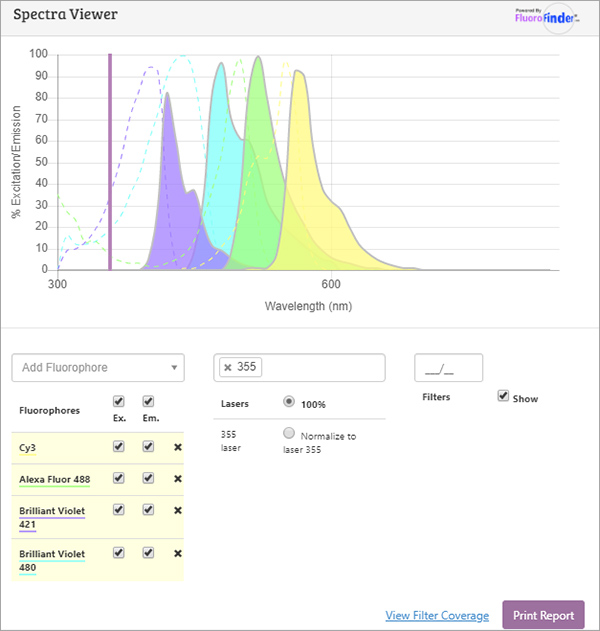
Fluorescent probes or fluorophores (fluorescent dyes or proteins) are coupled to a secondary antibody or streptavidin to allow visualization of an analyte. Each fluorophore has its specific spectral characteristics, with excitation and emission spectra particular to the molecule. Use the spectra viewer to build dye panels and compare the suitability of dyes for your application.
Fluorescent conjugates facilitate the simultaneous detection of multiple analytes for a number of techniques including flow cytometry, fluorescence microscopy (epifluorescence, confocal, multiphoton and super-resolution techniques), Western blotting and ELISA. Each fluorophore has its own spectral characteristics, with excitation and emission spectra particular to the molecule. Use the spectra viewer to build dye panels suitable for your experiment by plotting individual dye characteristics and instrument set up. For multiple labeling protocols, the dye panel choices are constrained by instrumentation and sample specifics such as lasers and filters available. To achieve good color separation, choose fluorophores with minimal spectral overlap.

How to select Fluorophores
The choice of fluorescent probe depends on a number of experimental variables.
Instrument
Consider excitation capabilities (lamp, lasers or LEDs determine excitation wavelengths) and the number of channels and filters available. The user should review the parameters of the filter sets included with their instrument. Long-pass filters provide the best sensitivity, while narrow band-pass filters enable discrimination between signals from different fluorophores in multiple labeling applications.
Use our Spectra viewer to develop your panel and build dye panels specific to your instrument.
Degree of color separation required
To achieve good color separation in a multiple labeling protocol, choose fluorophores with minimal spectral overlap.
Experimental sample
Choose fluorophores whose spectra do not overlap with endogenous fluorescence. Examine an unstained specimen under available filter sets to determine whether the sample exhibits autofluorescence.
Find out more about fluorescent conjugates available from Jackson ImmunoResearch here.


